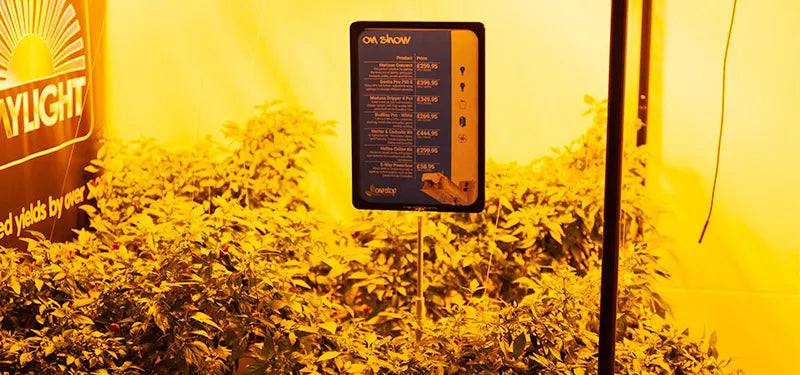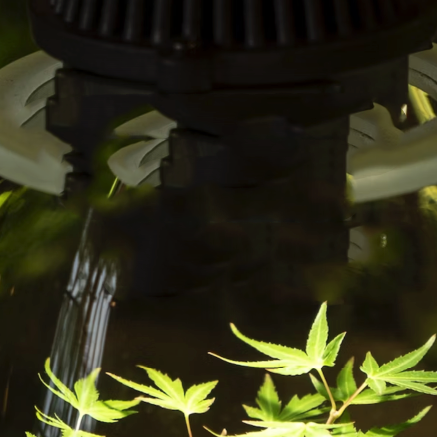How to Spec a Dehumidifier
When you're looking to grow the biggest and best crops, environment is 90% of the battle - and humidity is one of the most important factors. As the name suggests, dehumidifiers reduce the moisture content in the air, getting relative humidity readings down to acceptable levels whenever they get too high. In this blog, we talk you through the use of dehumidifiers in different grow room set-ups and explain how to spec one.
The first thing to factor in is your method of environmental control. Most growers use extraction systems for this purpose, pulling stale air from the grow room and drawing fresh air in. This reduces the effectiveness of dehumidifiers because the air in the grow space is getting exchanged as you're trying to treat it. It's like trying to wash your car while it's in motion - as you're cleaning it, it's picking up more dirt, dust and dead flies... There is, however, a caveat: during dark periods, temperatures are naturally lower, which reduces fan speed rates, causing relative humidity levels to spike. This is a phenomenon that's made worse by the fact that the air can hold less water at cooler temperatures than it can at hot temperatures. Dehumidifiers can be extremely useful during these periods, as the reduced airflow allows them to work more effectively at the time when they're most needed.
Dehumidifiers really come into their own in closed-loop rooms, where there's a much lower rate of air exchange. Most closed-loop rooms utilise a small level of extraction in order to maintain negative pressure, but it's negligible compared to a typical grow room. This means that a dehumidifier can stay on top of the environment without 'chasing its tail'.
Closed-loop rooms use air conditioners to control the environment, and some air conditioners need dehumidifiers more than others. Water-cooled air conditioners, like the Opticlimate Pro 3, naturally remove a lot of moisture from the air as a consequence of running their heat exchange system. During dark periods, though, you can still see spikes in humidity levels, when the cooling functionality is not in use - and because you're only running minimal extraction, you've got no other way of properly tackling the issue… Users of Pro 3s benefit massively from adding a dehumidifier to their set-up, allowing them to keep moisture levels in line 24 hours a day.
Split air conditioners, like the Opticlimate Split, use no water and rely 100% on refrigerant gasses and fans for cooling, and there is much less opportunity for moisture to get removed. The vast majority of the water that you put into the room is going to stay there and cause issues. Consequently, dehumidifiers are a lot more important when running these systems. In fact, in the case of Opticlimate Split units, we'd say that they are absolutely essential.
So how do I choose a dehumidifier? As a general rule, you should buy a dehumidifier that's capable of removing at least 75% of the water that you put into your grow room on a daily basis. If you're adding 100 litres to your tank per day on average, then you'll need to be able to remove 75 litres of water from the air. How rigidly you stick to this rule will depend on your set-up. If you're running full extraction, there's room to be flexible because you have other ways of dealing with moisture. If you're running a water-cooled Pro 3, stick to 75%, and if you're running a Split Opticlimate aim for 75%-100%.
We stock dehumidifiers with drying capacities to suit every grow room. Choose between the following units:
- ElectriQ Dehumidifier - 10 litres per day
- Quest 70 - 26 litres per day
- Quest CDG 114 - 55 litres per day
- Quest 155 - 75 litres per day
With the exception of the CDG 114, these dehumidifiers come with built-in hygrostats. Just choose your setting and they'll kick-in when needed. They can also be run from centralised controller units, like the Enviro Controller or the Maxi Controller, allowing you to regulate all of your grow room hardware from a central point. VPD is a more accurate way to measure the conditions that affect plants' transpiration rates. Getting levels in the sweet spot ensures that leaf stomata stay open, allowing CO2 to enter the plant and oxygen to exit, maintaining optimal rates of photosynthesis. This delivers growth rates that are as rapid as possible, which is why VPD is used in the professional horticultural industry to maximise productivity.
As an added bonus, running dehumidifiers gives you easy access to a supply of usable water. It's ideal for filling your reservoir because it has a much lower mineral content than regular tap-water. Just run a pipe from your dehumidifier to tank and let gravity do the rest. In theory, your tank should never overfill because you can only pull from the air what you put in.
You should note that dehumidifiers will put out some extra noise and heat, though the effects are negligible and are easily outweighed by the many benefits. For more information, check out our Humidifiers & Misters category or give us a call on 01782 749955.

